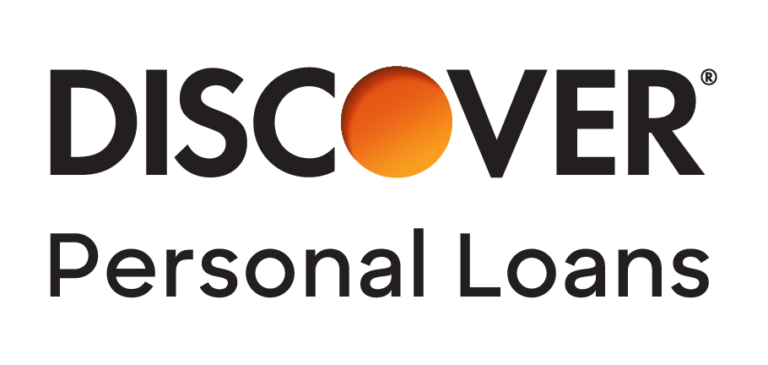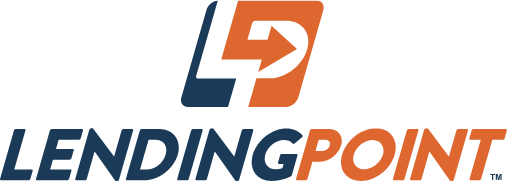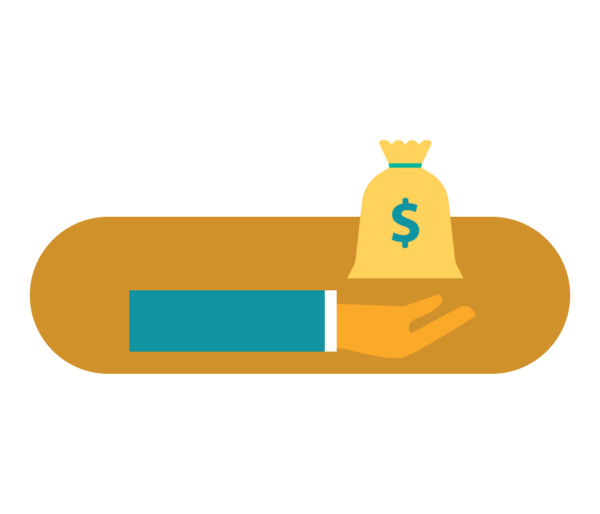Our goal is to give you the tools and confidence you need to improve your finances. Although we receive compensation from our partner lenders, whom we will always identify, all opinions are our own. Credible Operations, Inc. NMLS # 1681276, is referred to here as "Credible."
A few types of lenders offer personal loans, including online lenders, banks, and credit unions. Each lender has its own requirements and terms, so it’s important to shop around and consider your options to find the right loan for your needs.
Here’s what you should know about where to get a personal loan (and how to qualify for one):
- Online lenders
- Banks
- Credit unions
- How to compare personal loan lenders
- What you’ll need to get a personal loan
Online lenders
A variety of online lenders offer personal loans. Keep in mind that the best personal loan lenders provide low interest rates and a variety of repayment terms. Some also provide other features with their loans — such as no origination fees or no late fees.
Getting a personal loan from an online lender is often much faster compared to taking out a loan through a bank or credit union, which could make it a good choice if you need your funds quickly. Online lenders often have an easy application process, and many lenders allow cosigners for borrowers with poor or fair credit.
| Lender | Fixed rates | Loan amounts | Min. credit score | Loan terms (years) | Check Rates |
|---|---|---|---|---|---|
 | 9.95% - 35.99% APR | $2,000 to $35,000** | 550 | 2, 3, 4, 5* | |
|
|||||
 | 6.99% - 35.99% APR | $2,000 to $50,000 | 600 | 2, 3, 4, 5 | |
|
|||||
 | 7.99% - 24.99% APR | $2,500 - $40,000 | 660 | 3, 4, 5, 6, 7 | |
|
|||||
 | 7.95% - 29.99% APR | $3,000 to $40,000 | 640 | 2, 3, 4, 5 | |
|
|||||
 | 7.04% - 35.99% APR | $1,000 to $40,000 | 660 | 3, 5 | |
|
|||||
 | 7.99% - 35.99% APR | $2,000 to $36,500 | 660 | 2, 3, 4, 5, 6 | |
|
|||||
 | 18.0% - 35.99% APR | $1,500 to $20,000 | 540 | 2, 3, 4, 5 | |
|
|||||
 | 11.69% - 35.99% APR7 | $1,000 to $50,000 | 560 | 3, 5 | |
|
|||||
 | 7.74% - 35.99% APR | $1,000 to $50,000 | 600 | 2, 3, 5, 6 | |
|
|||||
 | 6.6% - 35.99% APR4 | $1,000 to $50,0005 | 620 | 3 or 5 years4 | |
|
|||||
Pros and cons of online lenders
Pros
- Easy application process: Online lenders generally provide a quick and easy application process, and you might get an approval decision within minutes.
- Faster loan funding: If you’re approved for a loan from an online lender, you can typically expect to get your funds within five business days — faster than many banks and credit unions.
- Lower rates and fees: Online-only lenders don’t have to worry about as many overhead costs as brick-and-mortar lenders, which can sometimes translate into savings for borrowers with lower rates and fewer fees.
Cons
- Fewer options for poor or fair credit: You’ll generally need good to excellent credit to qualify for a personal loan. If you have poor or fair credit, you might have an easier time getting approved for a loan with your current bank or credit union. But many lenders allow cosigners for borrowers, which can improve your chances of getting your loan application approved.
- No in-person locations: Online-only lenders don’t have physical locations. If you prefer in-person service, another type of lender could be a better fit for you.
Learn More: How to Check If a Personal Loan Company Is Legitimate
Banks
Not all banks offer personal loans, but if you already have an existing account with a traditional bank, it’s a good idea to ask if they do. Existing customers might even qualify for a personal loan just for having an account at the bank.
While great credit can ensure you’re eligible for a bank loan, you might find a better interest rate or loan term at other financial institutions. Sometimes, the loan application process at banks is longer and requires more paperwork than other lenders. Try to compare getting a loan from a bank to other places.
Pros and cons of banks
Pros
- Loyalty discounts: Many banks offer rate discounts on loans to borrowers who already have an account with them.
- Physical locations: If you prefer in-person service, taking out a personal loan with a bank that has physical locations could be a better experience for your needs.
Cons
- Not all banks offer personal loans: While some banks offer personal loans, not all of them do.
- Might need to already have an account: Depending on the bank you choose, you might need to have an existing account in order to apply for a loan.
- Could have higher rates and fees: Because banks have greater overhead costs compared to online lenders, their loans sometimes come with higher rates and fees.
Check Out: Low-Income Loans: Personal Loans for a Tight Budget
Credit unions
Credit unions are another place to look to get a loan. Because credit unions are not-for-profit organizations, they sometimes offer lower rates and fees on personal loans than other lenders. Additionally, approval ratings are higher for those with bad credit compared to banks.
The downside is that you’ll have to become a credit union member before qualifying for a loan. Requirements to join vary by credit union, but you usually need to be a member for a certain period of time — a month, for example — before receiving a loan. Just like banks and other lenders, make sure you check out your local credit union loan offers before signing up.
Pros and cons of credit unions
Pros
- Lower rates and fees: Because credit unions are nonprofit organizations, they often have lower rates and fees compared to other lenders.
- Could be easier to qualify with bad credit: Credit unions sometimes have less stringent eligibility requirements, which means it could be easier to qualify for a loan if you have poor or fair credit.
Cons
- Must join the credit union: While you typically don’t have to be a credit union member to apply for a loan, you’ll have to join the credit union if you are approved and want to accept the loan. Membership criteria depends on the credit union credit union but often requires you to live in a certain area, work in a specific field, or join an affiliated association.
- Smaller loan amounts: Personal loans at credit unions tend to be smaller than what you can borrow with online lenders or banks — usually no higher than $50,000.
If you’re considering applying for a personal loan, be sure to shop around to find the best rates and terms for your unique financial situation.
| Pros | Cons | |
|---|---|---|
| Online lenders |
|
|
| Banks |
|
|
| Credit unions |
|
|
How to compare personal loan lenders
It’s important to compare personal loan options to see which one is the right fit for your unique financial situation. When comparing lenders, consider the following factors:
- Loan amounts: Each lender has its own minimum and maximum loan amounts. Ensure that you can borrow as much (or as little) as you need.
- APRs: The annual percentage rate (APR) accounts for the interest rate and any fees. It’ll give you a better idea of the cost of the loan.
- Repayment terms: Some lenders have longer terms than others, so it’s important to find one that works for you and your budget. A longer repayment term will give you a lower payment, but you’ll pay more in interest over the life of the loan. A shorter repayment term will have higher monthly payments, but you’ll save on overall interest.
- Fees: Before signing any loan documents, be sure you understand what fees the lender charges. You may come across origination fees (a fee for processing your loan application), late fees, and prepayment penalties, among others.
- Discounts: Some lenders offer discounts if you set up autopay (or for being a returning customer). Not only can this save you money, but it can help ensure you don’t miss any payments.
- Funding time: Personal loans typically take one business day to a week to fund, though there are some lenders who offer same-day funding. If you’re looking for an emergency loan, the funding time is a crucial component.
- Lender reputation: Check out online lender reviews to learn more about these financial institutions, including borrowers’ experiences with customer service.
If you’re ready to take out a personal loan, remember to compare as many lenders as possible to find the right loan for you. Credible makes this easy — you can compare your prequalified rates from multiple lenders in two minutes.
What you’ll need to get a personal loan
Before you apply for a loan, make sure you have all your necessary paperwork in place. The more prepared you are, the less time it can take to get approved. Here’s what you should do as you prepare to apply for a loan:
- Review your credit. Get your free credit report from AnnualCreditReport.com to see if you have any bad marks. Derogatory marks can bring down your credit score, so you want to dispute any errors with the appropriate credit bureau to make sure it’s in the best shape possible to take out a loan.
- Decide how much you need. It might seem like a good idea to apply for a loan that’s more than you need right now, but it’s not worth it. Only request what you need and remember when you pay it back, it’s with interest. The amount you need might determine where you get a loan, as many lenders require a minimum loan amount.
- Check your budget. If your personal loan is going to add another monthly payment, make sure there’s room for it in your budget.
Once you’re ready to get a loan, you can use Credible to compare your prequalified rates from multiple personal loan lenders by filling out one simple form. If you think you won’t qualify for the rates you want based on your credit, you can also consider getting a cosigner.
Ready to find your personal loan?
Credible makes it easy to find the right loan for you.
Find My Rate
Checking rates won’t affect your credit
Ashley Harrison contributed to the reporting for this article.






